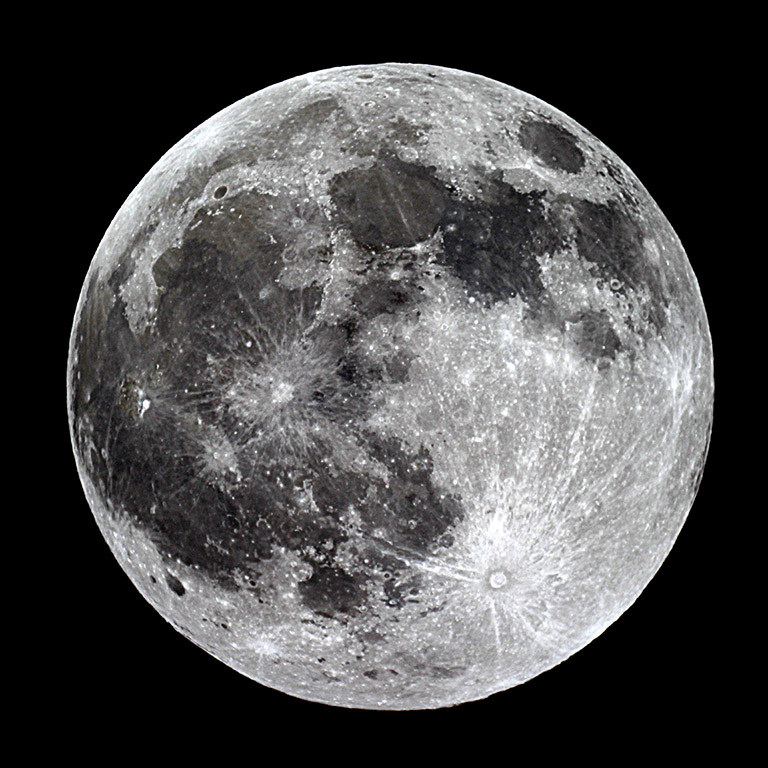August Skies
The August full moon will rise in the evening of Friday, Aug. 8, reaching full illumination at 3:55 AM eastern time Saturday morning, August 9; but we can enjoy bright, moonlit nights on both the 8th and the 9th. Just before full moon, on Aug. 7, the moon will reach aphelion, its furthest distance from the sun, a distance of 1.0164 Astronomical Units (AU) from the sun (1 AU is the average distance between Earth and Sun). At this point, the Earth will be 1.041 AU from the sun. Lunar aphelion occurs when Earth is far from the sun and the lunar apogee (around Aug. 1, when the moon is furthest from Earth this month) occurs near full moon. The distance between the Earth and Moon will be almost 240,000 miles.
August’s warm evenings are also time to enjoy the Perseid meteor shower. Unfortunately this year’s peak, Aug. 12-13, occurs near full moon, so faint meteors will be washed out against the moonlit sky. Savvy meteor watchers will plan their viewing for a few days after peak, when the moon rises later and the sky isn’t so bright. While the greatest number of meteors occur at peak, it’s possible to see Perseids from late July to mid August. Best viewing occurs in a moonless sky before morning twilight. If the moon is up, try putting your back to the moon or blocking the moonlight with a tree or building to reduce glare Remember, Perseid meteors can appear anywhere in the sky, but will appear to be moving away from the constellation Perseus. The meteors are caused by debris particles from Comet 109P/Swift-Tuttle hitting the earth’s atmosphere. Swift-Tuttle last visited the inner solar system in 1992, and will return again in 2126.
The planets will also be putting on a show this month.
Mercury will be easiest to spot in the morning sky before dawn around August 19, as it reaches its furthest distance west from the sun. After Aug. 19, it will move closer to the sun and rise later. On August 21st, a waning crescent moon will lie just above Mercury in the dawn sky. Soon Mercury will be lost in the glare of sunrise.
Venus will shine brightly in the east-northeast in early August, rising around 3 AM, with somewhat dimmer Jupiter following a half hour later. They will be some 10 degrees apart, but as the month progresses, Venus and Jupiter will move closer together, reaching conjunction on August 12, less than a degree apart. By the end of August, they will have separated again some 20 degrees apart, with Jupiter rising ahead of Venus.
August will give us our last view of Mars for a while, low in the western sky after sunset. It will move closer to the sun by the end of August, out of our view for the next few months.
But starting in early August Saturn will rise in the east about 10:30 in the evening, just after dark, and we’ll enjoy glorious evening views of Saturn for the next few months. As Saturn moves around its orbit, the rings will become more and more visible after the ring passage last spring.


 The College of Arts
The College of Arts